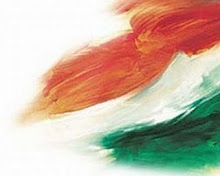Indian newage fiction is still struggling to find its direction. How does an author try to appeal to a McDonald’s-eating and Nike-wearing generation which loves to speak Hinglish and quote popular movies? First-time author Tushar Raheja reached out to this audience with his first novel ‘Anything For You Ma’am: an IITian’s love story’. Based on his life and friends, the graduate in Industrial Engineering follows the typical boy-meets-girl storyline with mixed results.
Tejas, the protagonist is your typical good-at-heart student who has a love for Wodehouse, music and his family. Enter Shreya, his little sister’s friend, who walks into his life and away with his heart. A good-hearted simple girl, Shreya is, according to Tejas, beautiful inside and out, a seemingly perfect mix of traditional and modern.
They are made for each other with only one big factor coming between them: distance. He lives in Delhi, she in Chennai. As love blossoms, Shreya’s trip to Chennai is interrupted by her family’s discovery of their relationship. What ensues is a narrative of Tejas’ efforts to meet her despite an IIT Industrial Tour, professorial interruptions and various obstacles thrown in the way.
The major character blocking an otherwise clear path is Professor PP Sidhu , whose insistence on Tejas’ attendance at the Tour results in a clever attempt by the hero and his protégés to get him to Chennai- by hook or crook.
The story telling, through the protagonist’s eyes, has an easy and comfortable feel, with frequent flashbacks to the good times Tejas had with Shreya. The settings are very Bollywood, romantic candle night dinners and late night phone calls and though these portions are enjoyable, the various clichés of love emerge to be a little tiresome. Shreya spends a lot of the book being a worried, tearful girlfriend, constantly reassured by Tejas that he will be there for her, no matter what.
Raheja frequently employs the use of what he calls ‘fate’ which however bears too much of the element of coincidence. Running into Professor Sidhu and Shreya’s brother on his train journey to Chennai adds unreality to what was until then a very believable tale.
The author gives much credit to Wodehouse for influencing his writing style, but his use of the older English terms don’t really fit into the Indian scene. The tagline ‘an IITian’s Love Story’ seems to be cashing on the fascination of IIT novels since Chetan Bhagat’s Five Point Someone, since the great institution has almost nothing to do with the storyline.
For a first time novelist, however, Raheja’s effort is a good one. The protagonist has a quirky sense of humour and a few good one-liners. ‘Life is not a bed roses, someone has wisely said, but it wasn’t supposed to be a bed wholly constructed of thorns either’, he quips.
The description of the final scene is beautiful and leaves the reader with an immense sense of satisfaction. What is touching, is Tejas’ frankness of emotions for Shreya, his initial insecurities before he proposes and his image as a romantic teenager that brings out the same in the readers.
If a Bollywood masala crowd pleaser was written as a book, ‘Anything for You Ma’am’, would be an ideal fit.



